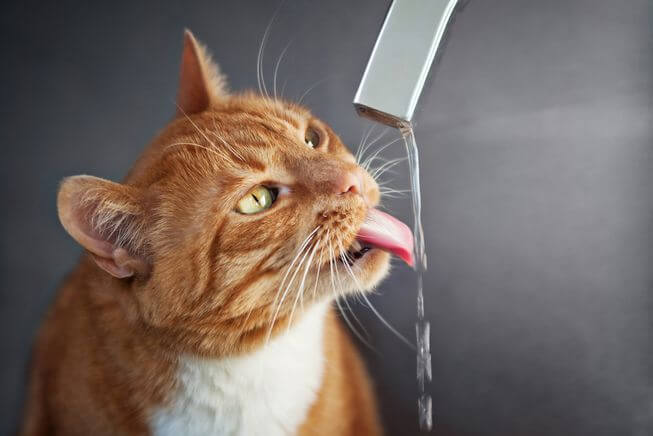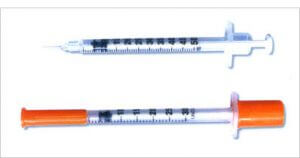
Diabetes, specifically diabetes mellitus, is one of the most common hormonal diseases we see in practice. Diabetes affects both cats and dogs, who often present with increased appetites, weight loss and excessive drinking and urinating. While managing diabetes is lifelong, with the diligent care and regular checkups your pet can have a normal life.
What is Diabetes?
In diabetes, the body is unable to regulate glucose levels. Normally, the hormone insulin controls the uptake of glucose into cells and thus regulates blood glucose. In diabetes the body fails, either to produce enough insulin (Type 1) or to respond appropriately to insulin (Type 2). This means that cells fail to get the insulin they need to thrive, triggering excessive hunger and weight loss. In addition, the kidneys excrete excessive glucose, which pulls water with it, causing the animal to urinate and drink excessively. Dogs typically have Type 1 diabetes while cats generally suffer from type 2 diabetes.

Cats –
Obese animals most often affected. Clinical signs include weight loss, excessive drinking and urinating, excessive hunger and begging, recurring infections, decreased activity level, and walking on their heels among others. This last sign is due to nerve damage from diabetes.
Dogs –
Diabetes also most often occurs in obese animals. Clinical signs include weight loss, excessive drinking and urinating, excessive hunger and begging, recurring infections, decreased activity level, and cataracts.

Diagnosis:
Diagnosis starts by a good clinical history and exam so be sure to remember to tell your veterinarian about any changes you have noticed. Blood and urine samples will show abnormally high levels of glucose and possibly ketones, which are produced when the body enters starvation mode. A severe build up of ketones can result in a condition called “ketoacidosis”. In this case your pet may be very sick and will often have to spend a day or two in the hospital getting their glucose under control. In most cases diagnosis and treatment is done on an out-patient basis.

Treatment:
There is no one and done treatment for diabetes. Instead, therapy consists of insulin supplementation and lifestyle changes. While cats can occasionally revert to normal glucose control, for most, and for all dogs, diabetes is life long. Insulin dosing consists of daily injections. While this may seem daunting, it is quite easy to learn and most owners find they become adept quickly. Insulin pens can take some of the difficulty out of this step and many owners are fond of them. In addition, changing injection spots and needles every injection helps limit the pain associated with injection. You should also feed a special diabetic diet, which can help improve their diabetic control and may decrease the amount of insulin needed. These diets work by including carbohydrates that break down more slowly, decreasing spikes in blood glucose. Refrain from giving treats and if necessary give only treats with a low amounts of sugar or carbs (I like freeze dried liver). Finally weight loss in obese animals helps with improving the body’s sensitivity to insulin. In cats this can sometimes lead to normal glucose control.

Monitoring:
Long term monitoring by yourself and your vet is the key to keeping your pet’s diabetes well controlled. At home blood glucose monitoring is the gold standard of testing, as glucose levels are unaffected by in hospital stress. If this seems too daunting for you testing of the urine for levels of glucose and ketones will allow prevention of ketosis and adjustment of insulin doses. You will also need to have your veterinarian run periodic glucose curves. This involves leaving your animal at the clinic for the day. They will measure blood glucose throughout the day to ensure they are responding correctly to the insulin and it is lasting long enough. Finally, closely monitoring food and water intake is important to ensure your animal continues to be well controlled.
Prognosis:
Uncontrolled diabetes has a number of severe effects including destruction of nerves, damage to organs, altered behavior, ketosis and eventually an early death. However don’t give up. With some careful patience and work to control your pet’s diabetes well controlled diabetic animals often live full, normal lifespans. If you think your pet may have signs consistent with diabetes, call us today!

